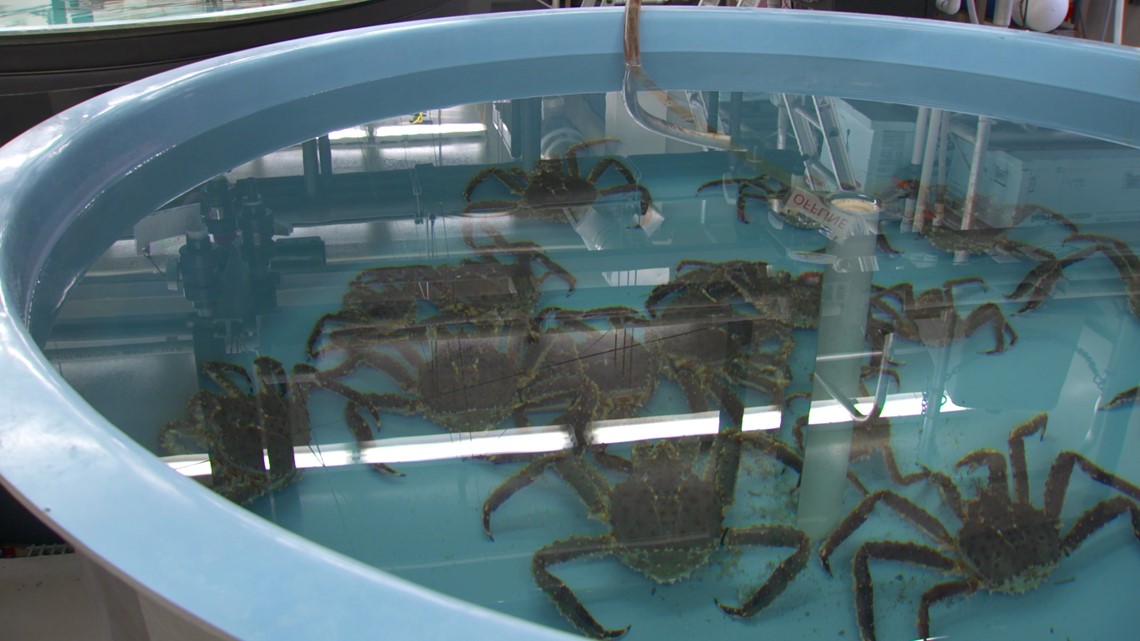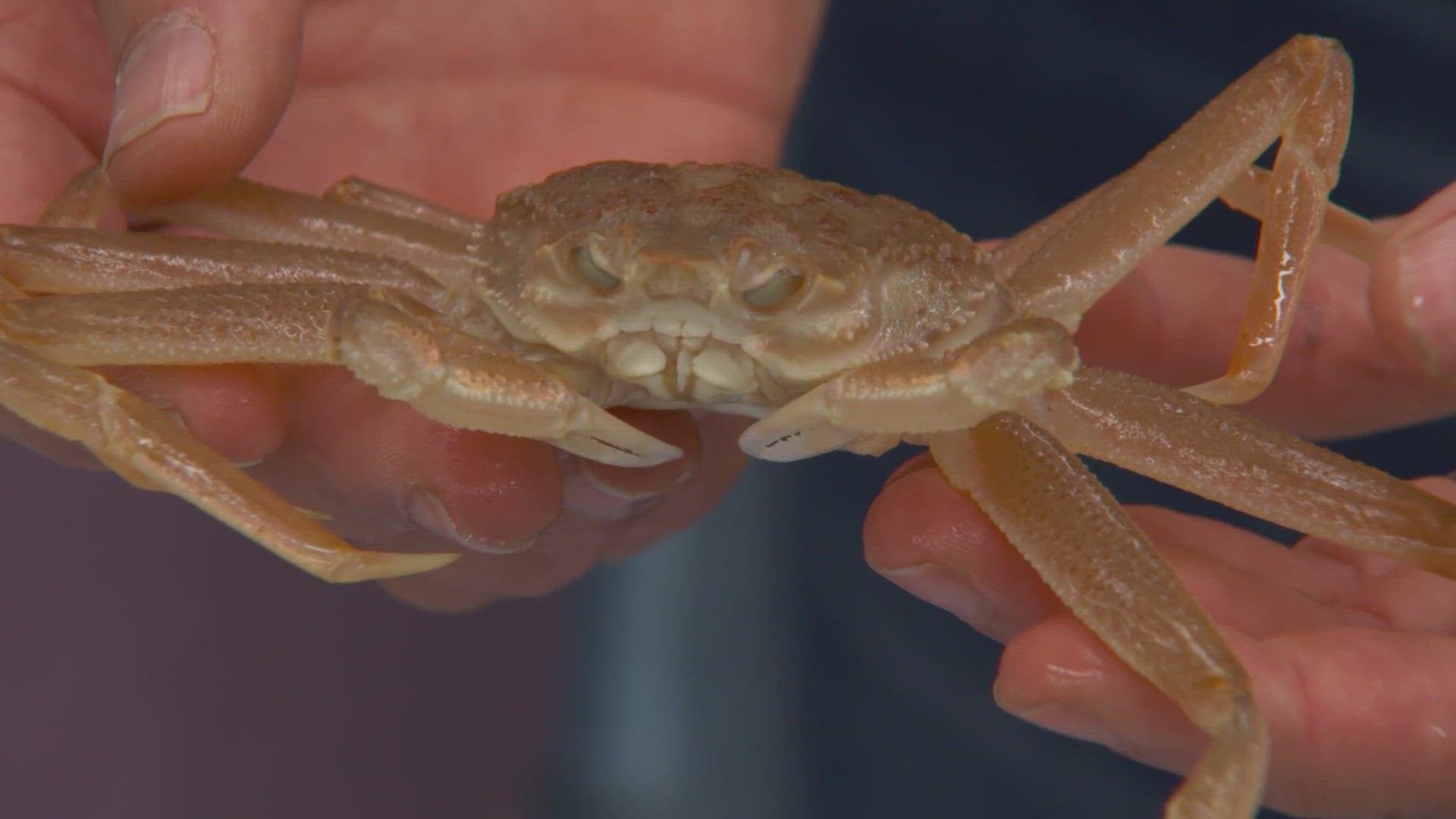KODIAK, Alaska — A quiet early October day on the bay in Kodiak, Alaska looks idyllic, but it's a problem for local fishermen.
Early fall is usually when crabbers are frantically preparing for a long season that starts October 15, but this year is different. A huge portion of the crabbing season is canceled with the news that once again, snow crabs will not be caught in the Bering Sea.
"On a normal year, you’d have people walking back and forth, boats transiting from the dock over here to here, putting pots on, getting gear ready," said commercial fisherman Gabriel Prout, who crabs with his family.
This is the second year in a row that the Alaskan crabbing industry is taking a hit, an unprecedented event.
"Bering Sea crab fishing has always been a very lucrative business," Prout said. "I remember stories from the 70s, even late 60s of guys coming back with a boatload of crab and going to buy gold watches with their earnings, making $100,000 in a month or two."
That changed in recent years when snow crabs virtually vanished from the Bering Sea.
This red flag was raised during the National Oceanic and Atmospheric Administration's (NOAA) annual summer survey. Every year, NOAA spends months collecting data on the Bering Sea crab population.
That data is then reviewed by scientists and a council of leaders from Northwest states to set overfishing levels.
The state of Alaska ultimately sets the total for how many can be caught each year based on NOAA's research.
Recent years show drastic changes. In 2018, there were an estimated 12.2 billion snow crabs in the Baring Sea. In 2019, that number dropped to just shy of 5 billion snow crabs, but it wasn't enough to raise red flags at the time. The summer survey was canceled in 2020 because of the pandemic. Then, in 2021 when the survey returned, those snow crab levels dropped to a little more than one billion total.
Kodiak-based NOAA Research Biologist Erin Fedeway says no one expected that drastic of a drop.
"It was evidentially a population collapse and the response basically was that 10 billion snow crab had disappeared from the system," Fedeway said.


"I did the bulk of the stations in the eastern Bering Sea that snow crabs typically inhabit and it was very apparent that something was wrong. We'd drop the net down at stations where we’d normally get thousands and thousands of juvenile snow crab and they were virtually absent from those high-density stations," said Fedeway, remembering the summer survey from 2021.
Scientists say this is unprecedented, and have been working to uncover why ten billion snow crabs virtually vanished.
Fedeway said simultaneously with the first drop in crab numbers, 2018 and 2019 brought record warm water and that had many indirect impacts on the species, ultimately leading to a large-scale mortality event. Those impacts have now seen back-to-back years.
"It’s either a mortality event, crabs are not there because they all died. Or our survey didn’t sample them. Whether that’s because they moved either west or north, those were questions we certainly asked in 2021," said Fedeway.
She said they did not see an increase in snow crabs in surrounding areas, so it did not seem likely that the species moved.
They also do not believe overfishing caused this specific species collapse, because the crabs that went missing are juveniles and would be both too small to catch and likely wouldn't fit in crabbing pots anyway.
Instead, their best guess is that they died, not because of direct impacts from the warm water, but indirect. This could be because the crabs sought out cold pools and crammed together, causing sickness and a fight for food.
"I do think for an arctic species, the future is uncertain," Fedeway said. "I'm an optimist and I can only hope the conditions continue to support viable populations of snow crabs."
Change could be coming, but it will take some time.
They are seeing an increase in juvenile crabs now, but it could take years for them to mature to a catchable size.
"Whether or not we see a lot of crab is all relative, if we see a lot of crab one year doesn’t mean we’ll see them all the next year," Fedeway said.
Families like Prout's are now left waiting for those juvenile snow crabs to mature and hopefully, survive. The species makes up 80% to 90% of their income and now multiple years of depleted income are catching up.
"It’s extremely difficult," Prout said. "I think we’re at risk of losing our small family fishing business. It's second, third generation fishing families."
They're finding other small sources of income, hauling salmon and other fish to make ends meet, and hoping this is the last year of their industry's shutdown.

